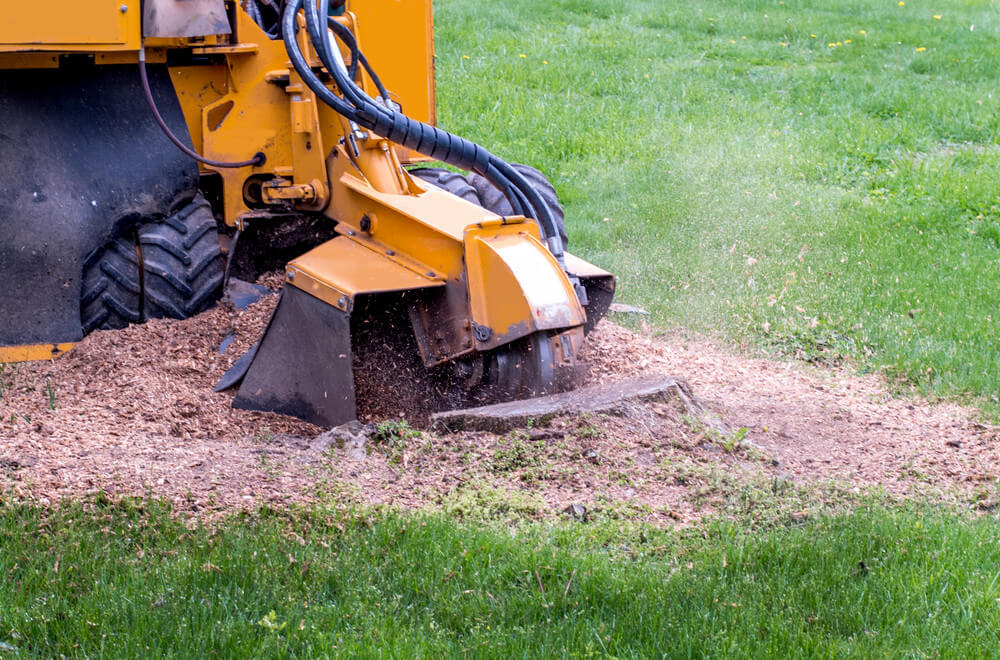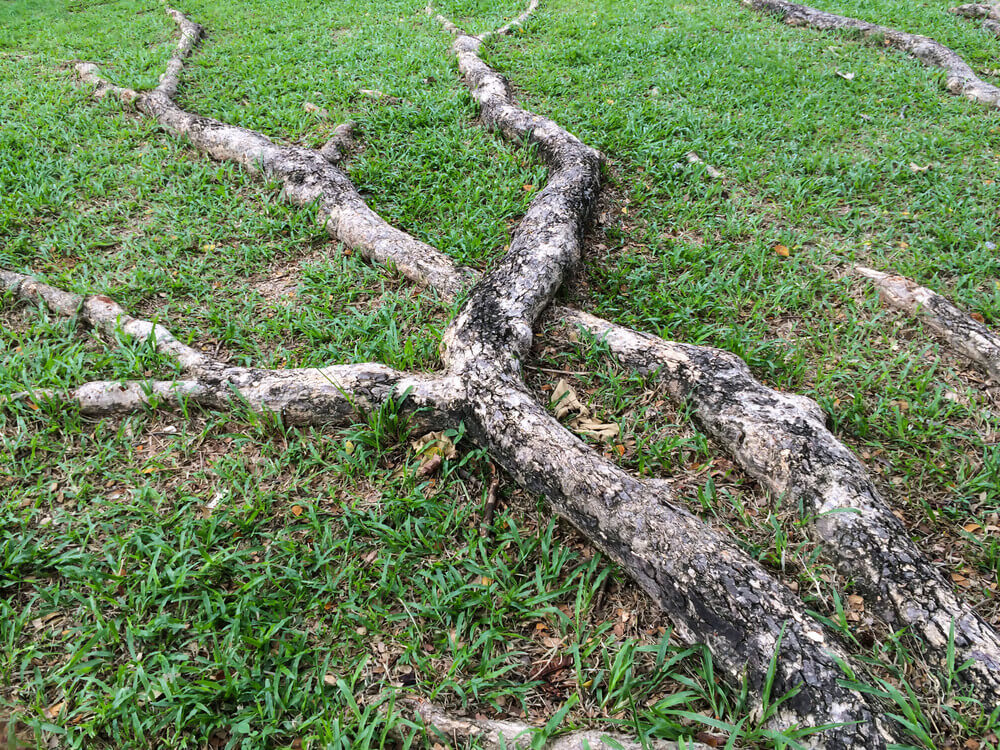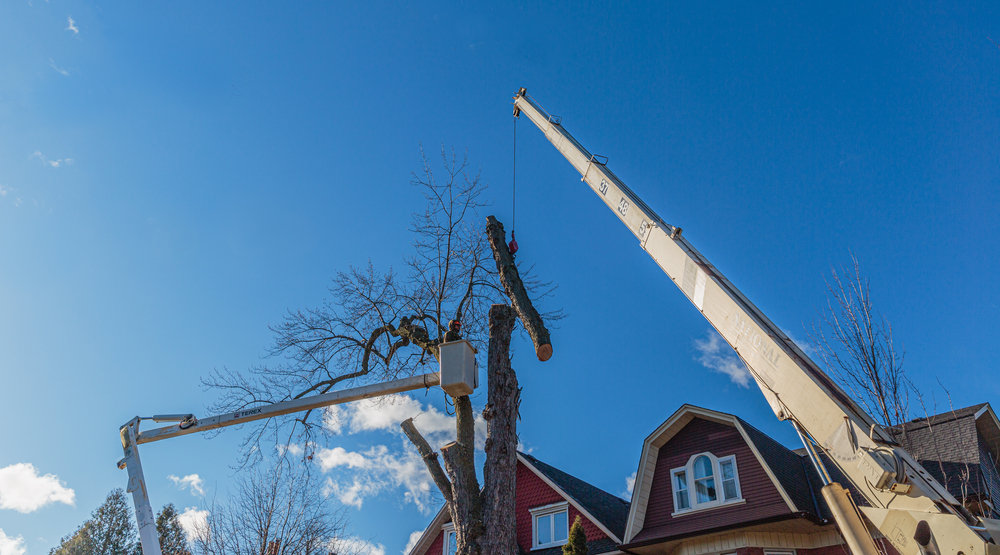Tree removal is a complicated process, and it doesn’t stop once the body of the tree is safely felled. Professional stump removal is a tricky process that really does call for the experts. Here’s how it works and why you should work with the pros.
What to Know About Stump Removal
Why Opt for Stump Removal?
There are plenty of reasons why you might have a stump in your yard. Whether you just had a tree removed or a stump came with your new home purchase, they aren’t uncommon. But stumps are a real hassle in practically every sense, so let’s explore why you need stump removal.
The most obvious reason for wanting a stump gone from your yard is that it’s an eyesore. People who take pride in their landscaping will attest to how much a stump can disrupt the flow of a lawn, but everyone knows they just don’t look great. No matter how low you cut a stump, you’re going to have disruptions in the way grass grows. Want to install a stone pathway or plant more flowers? That stump might get in the way in the future. Stumps impose both an aesthetic disruption and a physical one. Stumps can be hazards in the lawn when you’re walking, mowing, or when your kids are playing. Even if you think you’re used to the stump, it can prove to be a tripping risk when you’re in a hurry or distracted while doing yard work.
Stumps are also risky to other trees and plants in your landscaping. Stumps are great places for pests to build burrows or lay eggs, and they can take over quickly. Within years, a stump can attract termites and other insects, which will feed on the dead wood first. Once they’re finished, they can move on to other trees or even your home. Tree stump removal is the only way to ensure that you’re not ringing the dinner bell for invasive and noninvasive pests that consider your trees a long-term meal. Besides insects, diseases can also set in on stumps due to their preference for dead wood. A stump is an open, gaping wound in a tree, and trees don’t die right away when they’re cut down. That exposed trunk all along the top of a tree is very inviting to fungal diseases, which, much like insects, can spread from the stump to other living trees on your property.
As we mentioned, a stump is still a living tree, at least for a while. In some instances, and with certain species of trees, a stump can actually rally and regrow into a brand-new tree. Shoots (small branches) can grow off the main trunk since the root system of a tree is still alive and nourishing the stump. In time, these shoots can grow into full trees themselves. While this is not common and takes time, it is possible for a neglected stump to suddenly become a new tree. A tree stump removal service provided by The Parke Company ensures this doesn’t happen.
How Stump Removal Works
How does stump removal work, and what services are typically included in stump removal? Stump grinding is one of the primary methods landscaping companies employ to remove a stump. Using a specialized grinding tool, tree service professionals grind a stump down to below the ground level. Typically, the stump is ground down about 6-8 inches from the surface of the lawn. Stump grinding is the cheaper of the two main options for stump removal, with full stump removal being more costly. Since stump grinding is relatively simple with a single main tool, it doesn’t take much labor. It’s quicker to remove a tree via stump grinding. If the stump that was ground down was healthy and recently cut, you can usually keep the ground stump wood as mulch. If there is a risk of disease, however, an arborist may remove the sawdust and mulch to prevent the spread of disease.
While stump grinding gets rid of the visible and physical aspects of a stump above ground, it does leave much of the root system and some of the trunk intact. This means that planting a tree in this place probably won’t work, as the existing root structures will block new roots from growing. While that can be a dealbreaker for some, those unconcerned with planting new trees in that location will see much less mess. Removing a tree and the root displaces a lot of soil, and the time and money spent regrowing the lawn that was damaged is more of a commitment. What stump removal and stump grinding have in common is that they’re both efficient ways of removing trees. They are also far more environmentally friendly and safe for wildlife and yourself. Various at-home stump removal methods either don’t work, involve harsh and toxic chemicals, or just take far too long. Stump grinding and removal are not expensive processes, especially considering how much time and effort you can waste doing it on your own.
Other Tree Services to Consider
If you’re researching stump removal near you, maybe you have other tree service concerns. From pruning and trimming to planting and beyond, finding the right tree service provider is important. In many cases, arborists can cut down a tree and remove the stump in the same day. You can also opt to simply have the tree cut down and leave the stump. A trained arborist can offer you their professional opinion on what services your yard may need, and the best servicers provide free consultations and estimates. If you’re in the Nashville area and you’re looking for stump removal or other professional tree services, The Parke Company is here to help. With decades of experience, we’re one of Nashville’s premier tree service providers, and we take that title seriously.
Ready to explore your stump removal options or need to get some estimates on other tree services for your home? Give us a call today at The Parke Company, and find out why it’s always best to go with the experts.





